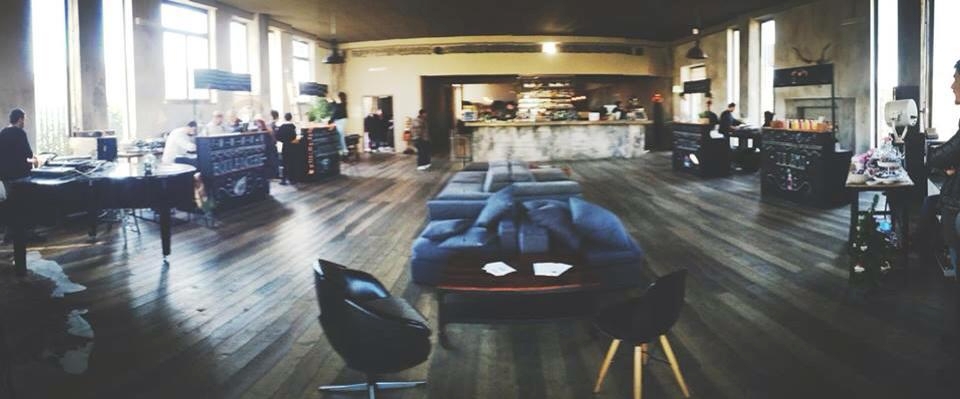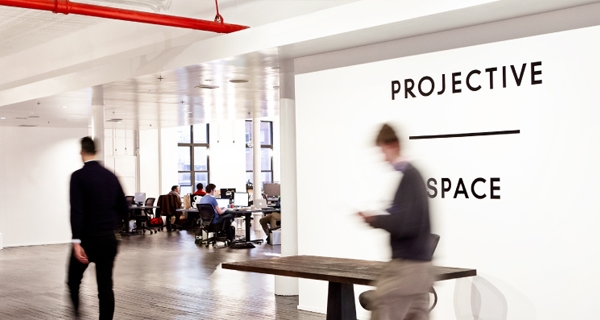In 2008, New York City launches its first coworking space: a project that is at the intersection between knowledge and business with communal objectives, an office open to freelancers and independent workers who could work from home with not much more than an iPhone, but who for the very same reason risk alienating themselves in the comfort of their own environment. During the first months, this space had about 25 members. Today, New York has tens of coworking spaces and various incubators, and the numbers are destined to grow. Beer in the fridges, yoga at lunch, weekly events, and constant courses to chose from, these are the broad strokes of the characteristics of coworking spaces in the City. On the flipside however, some of these spaces are so open that it’s sometimes difficult to get privacy to make a simple phone call, but for many start-ups, the most important characteristic – and that which is what makes this the winning concept – is the daily access to the network of other entrepreneurs.
Favoring interaction between all employees is a philosophy that has been pushed forward for many years already from the largest corporations. Steve Jobs defined creativity as “a product of spontaneous encounters, random discussions” and according to him, the workplace should encourage this type of relationship, precisely not to risk losing that “magic that comes spontaneously from the sharing of ideas”. The concept merges the various modes in which people work today, making it possible for and accentuating diversity and interaction, at the cost of the isolation that is created from the cubicles that we can today define as outdated. The planning strategy is a typology that allows accidental encounters despite an impeccable organizational efficiency. When a coworking space is planned, it seeks to create a place that offers a creative environment in which ideas can prosper. The space should offer areas to see and be seen, adapted to extroverted people as well as more introspective users. It should be open, welcoming and have at least one meeting room, desks in a subdivided space, some private offices, a lounge, and, ideally, a kitchen. Other than the structure, it’s fundamental to have a community, virtual or physical, and a series of events aimed at solidifying it.
 Architectural spaces blend with new ways to of operating and producing; the right balance between form and function has a significant impact on one’s method of working and interacting with others, a direct result of flexible solutions that can be adapted to the changing needs, at times even emotional, of whoever is working there. If the inhabitant is the center of planning these new coworking spaces, then the layout consequently becomes the design of a true urban microcosm, with “neighborhoods” delimited by ornamental objects almost always mobile to reinforce the idea of constant transformation; a "business center" in which you can have meeting with clients and other transactions, "green areas" designed for rest and relaxation where people can go to find inspiration which, for the formation of creative ideas, is fundamental. As such, a new kind of contemporary organization has developed in coworking spaces; a cross between home, internet cafe and the old office.
Architectural spaces blend with new ways to of operating and producing; the right balance between form and function has a significant impact on one’s method of working and interacting with others, a direct result of flexible solutions that can be adapted to the changing needs, at times even emotional, of whoever is working there. If the inhabitant is the center of planning these new coworking spaces, then the layout consequently becomes the design of a true urban microcosm, with “neighborhoods” delimited by ornamental objects almost always mobile to reinforce the idea of constant transformation; a "business center" in which you can have meeting with clients and other transactions, "green areas" designed for rest and relaxation where people can go to find inspiration which, for the formation of creative ideas, is fundamental. As such, a new kind of contemporary organization has developed in coworking spaces; a cross between home, internet cafe and the old office.
It’s precisely ‘thanks’ to the particular economic and social situation in Italy, the crisis, that the ‘coworking’ phenomenon rapidly took shape and, along with it, the concept of networking and community, not forgetting of course the benefits of splitting costs.
In areas that are wide-ranging – and contaminating each other – from architecture and design, to graphics and communication, art and photography, Rome has quickly adopted this trend responding to the crisis and high rent costs with reused factories and lofts, curated in every detail (technological and aesthetic) to respond to different tastes. Coworking come exit strategy addresses the conditions of contemporary work, giving the opportunity for various professions to cooperate among one another, projects thus characterized by a multidisciplinary approach; subdivisions and the absence of exchanges weakens the quality of the product/project, but on the contrary, sharing knowledge and a network of communication are decisive factors in the contemporary society.
 Despite an environment that unfortunately still opposes such initiatives, there are young professionals that have faith in their passion. Co.Ho. of Via Tiburtine in Rome is a such example: a building used in the ‘80s as a textiles factory and abandoned for over 20 years, until a group of young professionals saw a larger potential in those 1,000 square meters of concrete. They reimagined the space and transformed it into an extraordinary cultural center, both in an artistic and business sense. From this large loft was created many different areas, all with a precise character with modern furniture and reused objects, creatively staged to stimulate the new users and help them work better. No need for walls to separate the small nuclei where freelance artists, architects and photographers create their own ecosystems, thus accentuating the fact that one does not need to knock at a door to ask an opinion, taking full advantage of the benefits of coworking.
Despite an environment that unfortunately still opposes such initiatives, there are young professionals that have faith in their passion. Co.Ho. of Via Tiburtine in Rome is a such example: a building used in the ‘80s as a textiles factory and abandoned for over 20 years, until a group of young professionals saw a larger potential in those 1,000 square meters of concrete. They reimagined the space and transformed it into an extraordinary cultural center, both in an artistic and business sense. From this large loft was created many different areas, all with a precise character with modern furniture and reused objects, creatively staged to stimulate the new users and help them work better. No need for walls to separate the small nuclei where freelance artists, architects and photographers create their own ecosystems, thus accentuating the fact that one does not need to knock at a door to ask an opinion, taking full advantage of the benefits of coworking.
We’re talking about “stimulating atmospheres’ and we find in this one of the emerging forms of the contemporary business.
Traduzione dall'italiano di Christine Djerrahian.












